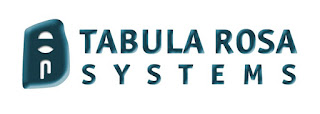|
Dark Data
|
|
Dark
data is digital information that is not being used. Consulting and
market research company Gartner Inc. describes dark data as "information
assets that an organization collects, processes and stores in the course of
its regular business activity, but generally fails to use for other
purposes." Many times, an organization may leave data dark for practical reasons. The data may be dirty and by the time it can be scrubbed, the information may be too old to be useful. In such a scenario, records may contain incomplete or outdated data, be parsed incorrectly or be stored in file formats or on devices that have become obsolete. Increasingly, the term dark data is being associated with big data and operational data. Examples include server log files that could provide clues to website visitor behavior, customer call detail records that incorporate unstructured consumer sentiment data and mobile geolocation data that could reveal traffic patterns that would help with business planning. Potentially, this type of dark data can be used to drive new revenue sources, eliminate waste and reduce costs. As a result, many organizations that store dark data for regulatory compliance purposes are using Hadoop to identify useful dark bits and map them to possible business uses. |
Ecclesiastes 3:19-21 King James Version
19 For that which befalleth the sons of men befalleth beasts;
even one thing befalleth them: as the one dieth, so dieth the other; yea, they
have all one breath; so that a man hath no preeminence above a beast: for all
is vanity.
20 All go unto one place; all are of the dust, and all turn to
dust again.
21 Who knoweth the spirit of man that goeth upward, and the
spirit of the beast that goeth downward to the earth?
www.amazon.com/author/paulbabicki
====================================================
03/04/2019 09:06 AM EST
Original release date: March 04,
2019
The US-CERT
Cyber Security Bulletin provides a summary of new vulnerabilities that have
been recorded by the National
Institute of Standards and Technology (NIST) National
Vulnerability Database (NVD) in the past week The NVD is sponsored
by the Department
of Homeland Security (DHS) National Cybersecurity and Communications Integration
Center (NCCIC) / United States Computer Emergency Readiness Team
(US-CERT). For modified or updated entries, please visit the NVD,
which contains historical vulnerability information.The vulnerabilities are based on the CVE vulnerability naming standard and are organized according to severity, determined by the Common Vulnerability Scoring System (CVSS) standard. The division of high, medium, and low severities correspond to the following scores:
·
Medium - Vulnerabilities
will be labeled Medium severity if they have a CVSS base score of 4.0 - 6.9
Entries may
include additional information provided by organizations and efforts sponsored
by US-CERT. This information may include identifying information, values,
definitions, and related links. Patch information is provided when available.
Please note that some of the information in the bulletins is compiled from
external, open source reports and is not a direct result of US-CERT analysis.The NCCIC Weekly Vulnerability Summary Bulletin is created using information from the National Institute of Standards and Technology (NIST) National Vulnerability Database (NVD). In some cases, the vulnerabilities in the bulletin may not yet have assigned CVSS scores. Please visit NVD for updated vulnerability entries, which include CVSS scores once they are available.

www.amazon.com/author/paulbabicki ====================================================
www.amazon.com/author/paulbabicki Anyone who would like to review the book and have it posted on my blog or website, please contact me paul@netiquetteiq.com. In addition to this blog, I maintain a radio show on BlogtalkRadio and an online newsletter via paper.li.I have established Netiquette discussion groups with Linkedin and Yahoo. I am also a member of the International Business Etiquette and Protocol Group and Minding Manners among others. I regularly consult for the Gerson Lehrman Group, a worldwide network of subject matter experts and I have been contributing to the blogs Everything Email and emailmonday . My work has appeared in numerous publications and I have presented to groups such as The Breakfast Club of NJ and PSG of Mercer County, NJ.
Additionally, I am the president of Tabula Rosa Systems,
a “best of breed” reseller of products for communications, email,
network management software, security products and professional
services. Also, I am the president of Netiquette IQ. We are currently developing an email IQ rating system, Netiquette IQ, which promotes the fundamentals outlined in my book.
|











